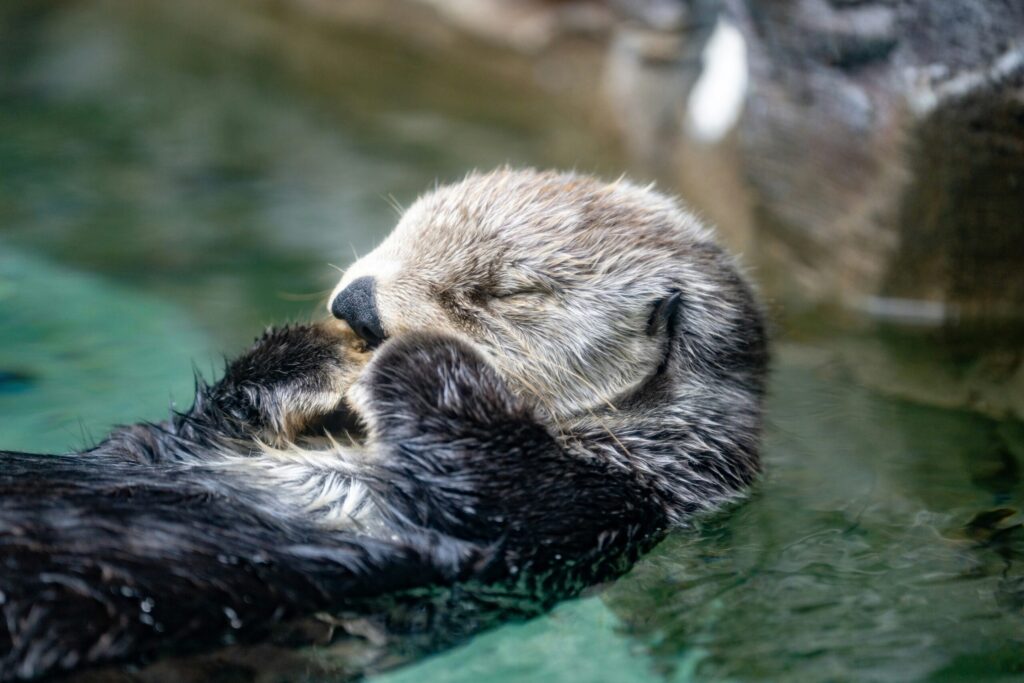Enhydra lutris kenyoni

Habitat, Diet & Status
Habitat: Kelp forests and rocky coastlines along the North Pacific, historically including the Oregon coast
ESA Status: Threatened (southern population); extirpated from Oregon
Diet: Sea urchins, crabs, clams, mussels, and other marine invertebrates
Sea otters are ecosystem engineers that play a crucial role in maintaining the health of nearshore marine environments. By feeding on sea urchins, they prevent overgrazing of kelp forests—vital underwater ecosystems that shelter countless species and help capture carbon from the atmosphere. Otters rely on thick coastal kelp beds and clean, abundant shellfish to survive.
The Message and the Coast
Once common along the Oregon Coast, sea otters were hunted to near extinction during the maritime fur trade. Though they have recovered in parts of Alaska, British Columbia, and California, they remain absent from Oregon’s waters. Their local extirpation has disrupted the balance of coastal ecosystems, leading to overpopulation of urchins and the collapse of kelp forests.
Reintroducing sea otters to Oregon is not just about species restoration—it’s about rebuilding a missing relationship in the coastal web of life. Their return would benefit everything from fish nurseries to seabirds to carbon-storing kelp beds. Otters also hold cultural significance for coastal Indigenous communities, where they are respected as relatives and protectors of the sea.
What You Can Do: Learn more about sea otter reintroduction efforts in Oregon, and support organizations advocating for healthy kelp forests and marine biodiversity. Share their story to build awareness of how a single species can shape an entire ecosystem.
